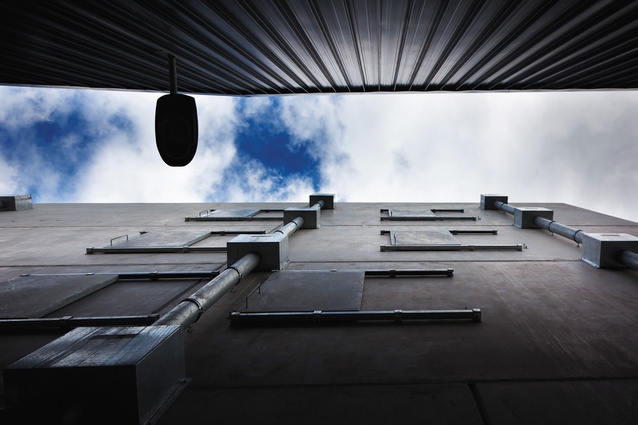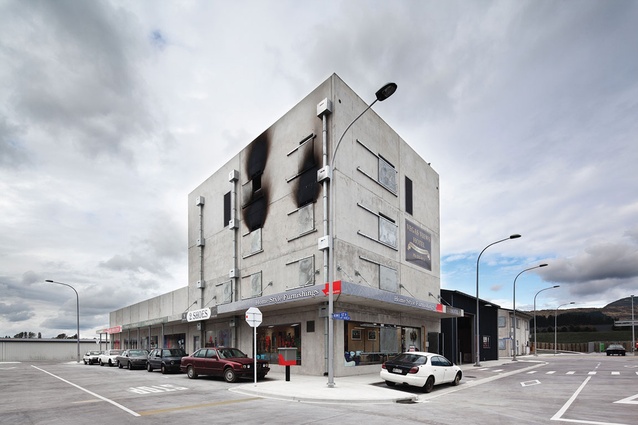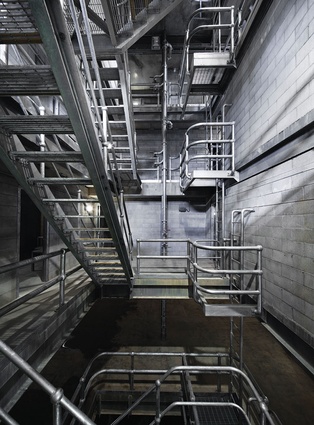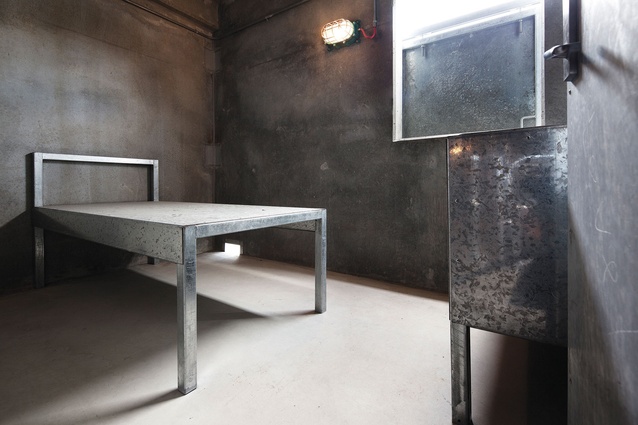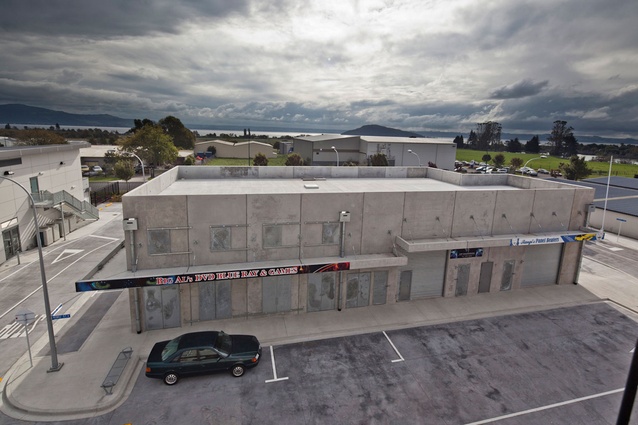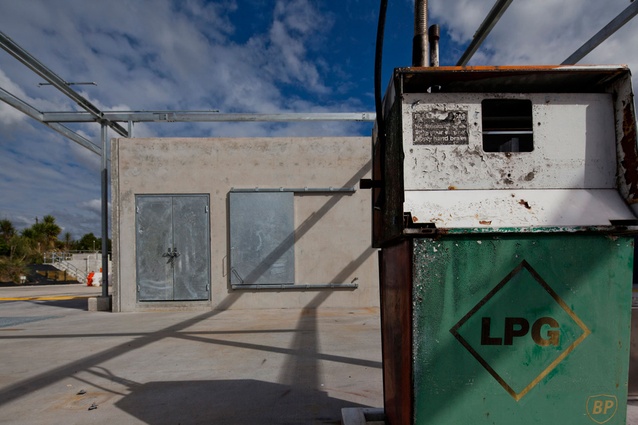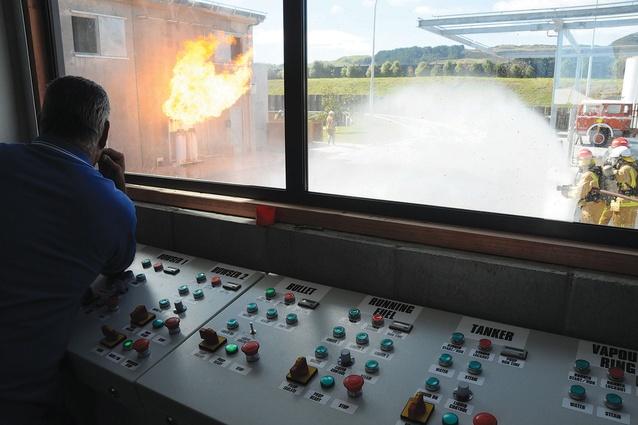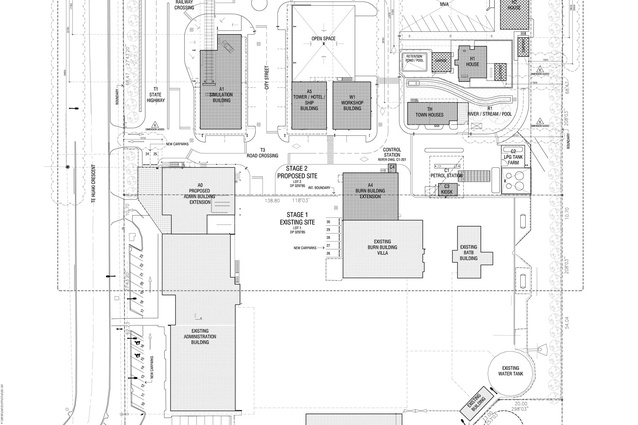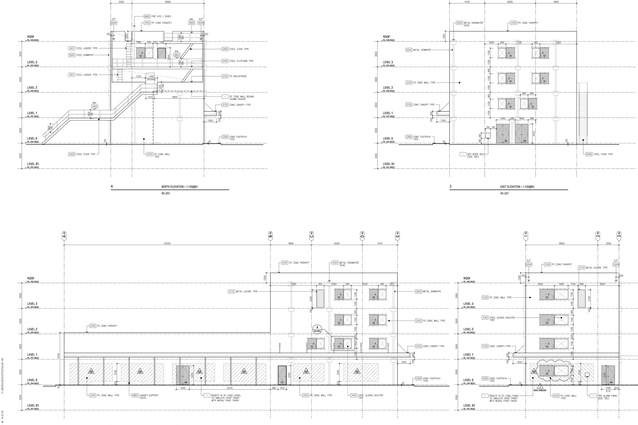New Zealand Fire Service National Training Centre
Recall images of sombre concrete buildings in war-torn Sarajevo, minus the bullet holes. Or, imagine the film set of one of JG Ballard’s dystopias and you gain a sense of the New Zealand Fire Service’s (NZFS) new National Training Centre near Rotorua.
The design for the training facility is modernism taken to its extreme – where form is completely at the mercy of function. Fortunately, to describe the design as brutal and utilitarian is not, in any way, an insult to the architects, RTA Studio.
Commissioned in 2008, the project brief was to design a highly functional facility on an existing site within a strict budget, that would improve the training of New Zealand’s firefighters. Located opposite the airport in Rotokawa on the south-east edge of Lake Rotorua, the new Centre includes: an administration, conference and mess block; essential transport and equipment storage buildings; and the interesting part: the buildings and spaces that can be set on fire for training purposes. Essentially, this is a mock town built from concrete and galvanised steel, incorporating fire ‘scenario’ buildings and external ‘incident’ set-ups.
Stage One of the centre was completed in 2006; however these are limited facilities for basic training and do not provide the advanced provisions required to train officers. At the time, NZFS officers were being flown to Queensland for training at considerable cost. So, given a set budget and knowing that this was a one-off opportunity to get the project right, the NZFS and RTA Studio investigated the pros and cons of different fire training centres worldwide. Training Centre manager, Geoff Purcell, says, “The French have a very sophisticated facility and the Americans have dozens of them… (but) we also knew that some centres had experienced a number of functional issues.” They visited training centres in Queensland and Melbourne to learn from these designs. “Work flows (in some of the facilities) were not good so we spent a lot of time researching what we needed,” says Purcell, “The design philosophy was to optimise the spend and plan the space to be multifunctional, providing virtually limitless (firefighting) scenarios.”
This New Zealand-based centre is now considered to be the most advanced in Australasia and should save the NZFS around $300,000 each year. It is a carefully considered suite of ‘scenario’ buildings in their rawest forms, capable of withstanding extremely high temperatures, fire, smoke and water on a regular basis. Various building types are catered for, including hotels, retail, various residential and commercial property options; in addition to set-ups for cruise ships, road/train crossings, car fires and oil-tanker spillages. It opened in April and around 1,600 NZFS staff will be trained at the facility each year, in addition to trainees from the Army, Police, Civil Defence, Search & Rescue and St John Ambulance.
To understand the planning of the buildings and spaces, it was crucial that the architects understood the practicalities of training. For a start, it is difficult to imagine what it must be like for the firefighter, wearing a sweaty protective uniform, carrying 16kg of breathing-apparatus kit, navigating his or her way through a burning building that is filled with smoke, flames and extreme heat. It is pitch-black, the source of the fire isn’t apparent, nor is whether anyone is trapped in the building. This experience pushes even the bravest of people to their physical and psychological limits. “Time is the issue. It must be terrifying,” states Ben Hayes from RTA Studio, who has witnessed trainees in action. “It is essential that firefighters are taught to always ‘expect the unexpected’… (So) the design becomes an exercise in moving from space to space.”
In stark contrast to what is instilled in architects during their training, the navigation of the buildings was deliberately designed to be difficult, re-enacting the ‘blind’ experience of firefighters in the field. Within this fire town, obstructions are purposely left in the way, including: lamp posts which fall onto cars, an imitation postbox, cars in front of fire hydrants and staircases which lead in all directions. One firefighter likened the labyrinthian metal stairwell to “navigating an Escher drawing”. A concrete stairwell in the workshop building has several spongy wooden stair-treads as a ‘clue’ for the trainees, to make them question whether there is fire beneath the stairs and let others in the team know.
Along every step of the design process, when the architects presented a drawing, the NZFS team would ask whether it was ‘fireman proof’. “If there is an emergency situation, the firefighters will just bash down the door,” states Purcell. So, all elements had to be extremely robust and specifications had to be innovative, from the type of galvanising, to the make-up of the concrete, to the quantity of water a roof can withstand. “We had to beef up some of the roofs and make others entirely in concrete,” says Hayes. “The villa needed to be a real-life example of a building, so the roof was sacrificial to a certain extent but easy and inexpensive to replace.”
With so much water being used for extinguishing fires, eCubed designed a sustainable system that enables it to drain out of all the buildings and incident sites into what is essentially a very deep swimming pool, then be recycled for next time. A large drying room uses the latest desiccant dehumidifing system to speed-dry the protective uniforms overnight, sucking 12kg of water out of the air per hour.
Inside many of the training rooms is a closet-like concrete space where the operator mans a control panel. He or she peers through small fire-retardant glass windows to coordinate each scenario in relation to the trainees’ reactions. The panel of buttons looks simple enough but it, in fact, controls a sophisticated on-demand, clean-burning gas system. A network of pipes runs throughout most of the buildings, fed by LPG vapour fuel to create fire while smoke is made by heating Ondina 15 oil and adding nitrogen at flashpoint to prevent it catching fire. Meanwhile, the service-station incident utilises liquid-LPG-fuelled training props.
The architects extensively researched how all materials would react under these conditions; for example, LPG vapour creates a particularly fierce heat, so sprinklers are also used to prevent spooling of the concrete. “This specialist system was the biggest challenge for the architects and contractors,” states Purcell. “It’s way out there in terms of design and build as it wasn’t able to be specified – it’s a first in New Zealand.”
The National Training Centre is probably the only opportunity for many years for an architect to design a building like this in New Zealand. It is a facility that needs to adapt over time as fire trends change and different scenarios are required. It may not be the most comfortable architectural experience but it is certainly one of the most interesting. “If we had designed it as a nice space to be, it wouldn’t be much use to them,” says Hayes. And, he’s right. These buildings aren’t ‘nice’ spaces to be in at all and they’re not meant to be. But, I highly recommend a visit; it’s a fascinating place for anyone interested in how materials, space, volumes and navigation affect the human senses. And, of course, how all of the above react in a fire.

